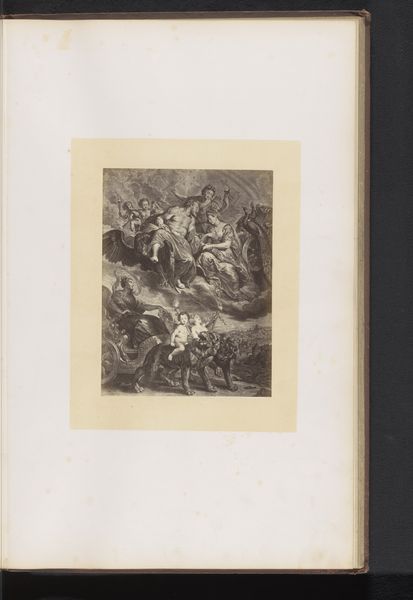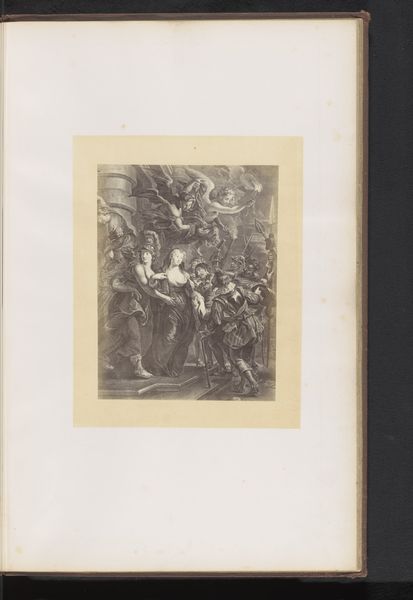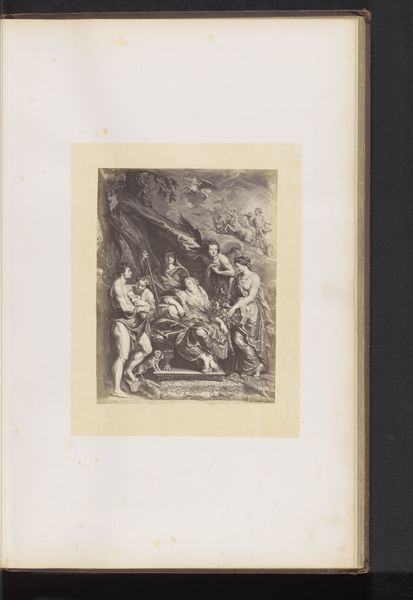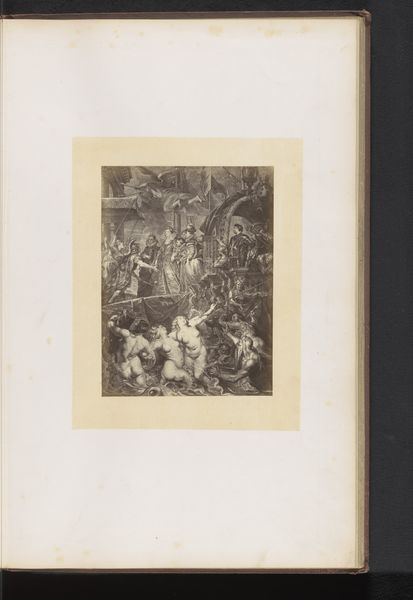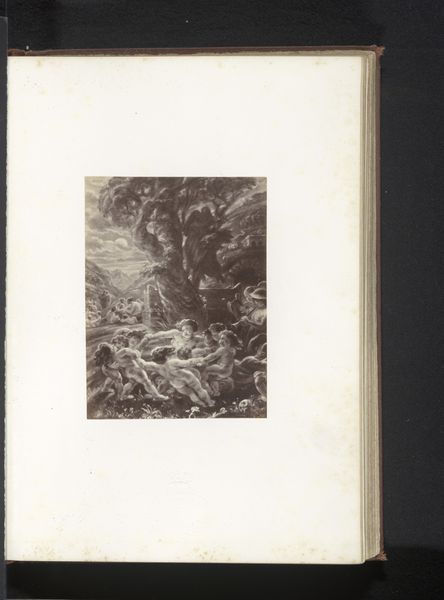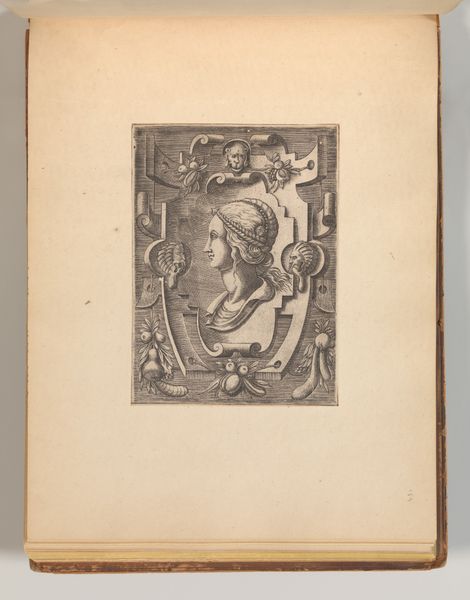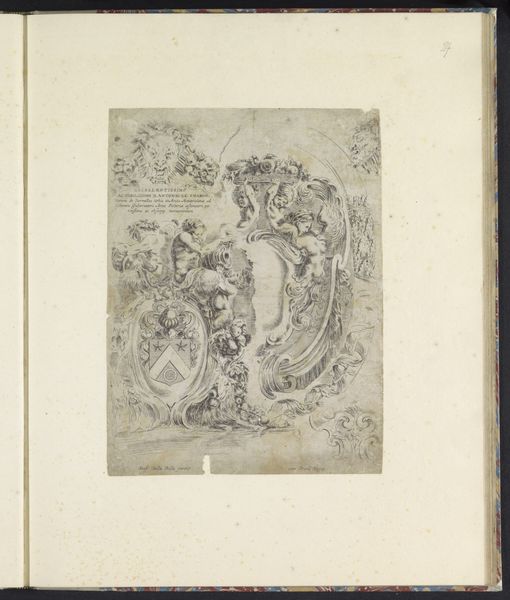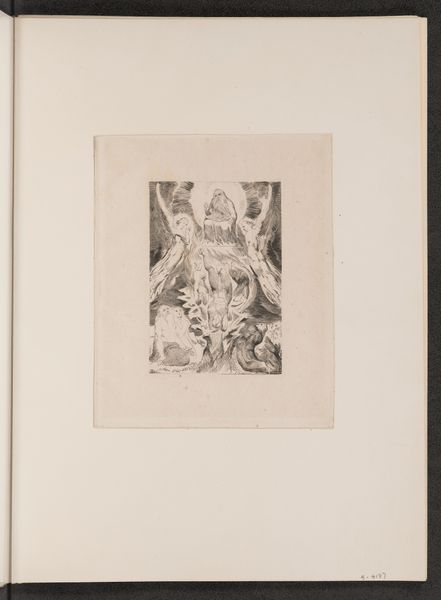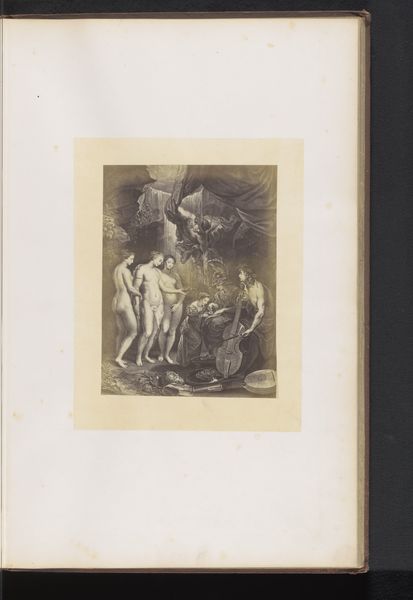
Fotoreproductie van een gravure van een portret van Maria de'Medici als Minerva door Jean-Marc Nattier, naar het schilderij door Peter Paul Rubens before 1864
0:00
0:00
dechampsetcie
Rijksmuseum
Dimensions: height 214 mm, width 160 mm
Copyright: Rijks Museum: Open Domain
Editor: So, this is "Fotoreproductie van een gravure van een portret van Maria de'Medici als Minerva door Jean-Marc Nattier, naar het schilderij door Peter Paul Rubens", which roughly translates to photographic reproduction of an engraving of a portrait of Maria de'Medici as Minerva. Phew, that's a mouthful! Made before 1864, by Dechamps et Cie. it's currently held in the Rijksmuseum. It strikes me as quite ornate, and clearly drawing from a classical, Baroque style... I'm curious, what draws your eye in this particular piece? Curator: The layers, definitely the layers. Think about it - this isn't just a portrait, but a copy *of* a copy *of* a portrait! It began with Rubens' painting of Marie de' Medici, transforming her into Minerva, the Roman goddess of wisdom and strategic warfare – that’s layer one, allegory. Then, Jean-Marc Nattier created an engraving. Now, Dechamps et Cie. has photographed the engraving! I see it as a game of telephone through art history. Doesn't that make you consider originality, interpretation, and how images transform over time? Editor: It does! The layers give it a sense of historical depth and how a single image is filtered through different eras, hands and artistic mediums. How do you think this layered approach changes our reading of the Baroque portrait? Curator: It muddies the water a bit, in the most interesting way. The starkness of the engraving emphasizes line and form in a way Rubens' original lush Baroque painting might not have. By the time it becomes a photographic reproduction of that engraving, we're dealing with multiple artistic interpretations vying for attention. It feels like witnessing a historical conversation. Tell me, do you see the symbolism adding a contemporary voice too? Editor: I agree; witnessing a historical conversation. It strikes me that these historical echoes are actually adding to this work, instead of distracting from its artistry and meaning. What an ingenious composition! Curator: Precisely! Each layer enhances a whole new perspective to a new generation, each more compelling than the last.
Comments
No comments
Be the first to comment and join the conversation on the ultimate creative platform.
